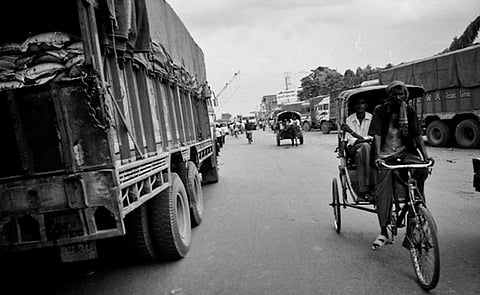The night bus had arrived early at Birgunj, on the Nepal side of the Indo-Nepal border, a rare occurrence that I was not able to appreciate fully because it was 4:30 in the morning, and the city was still slumbering. Trying to figure out what to do with myself, I turned to Bikas, a friend I had just made on the bus journey. "Which way is the border?" I asked. "About 15 minutes down that way," he replied, pointing down a deserted road that dissolved into darkness. "Would you like to see it?"
We found a rickshaw heading toward the border and set out south. As we rode, the early morning began to crack through the night. Along the road, open fields dotted with unremarkable cement buildings slowly came into view in the pinkish light. A tonga carrying a few passengers passed our rickshaw, and Bikas flagged it down. "How about some tea?" he asked as we climbed aboard. A few minutes down the road, Bikas pointed to a wooden archway: "That's the gateway of Nepal." Confused, I asked where we were going. "To India," he responded, "to drink tea."

